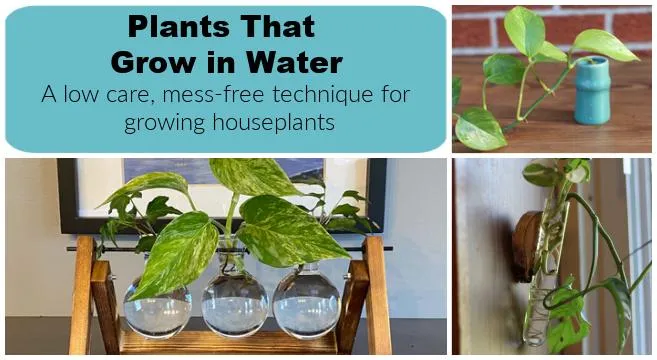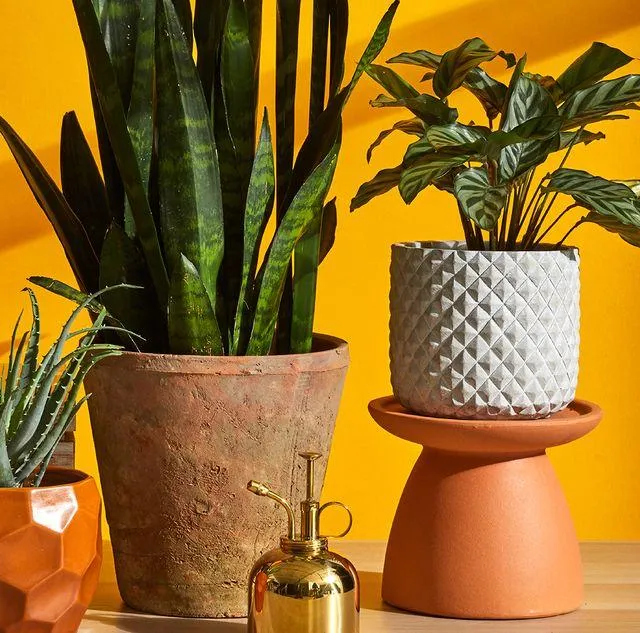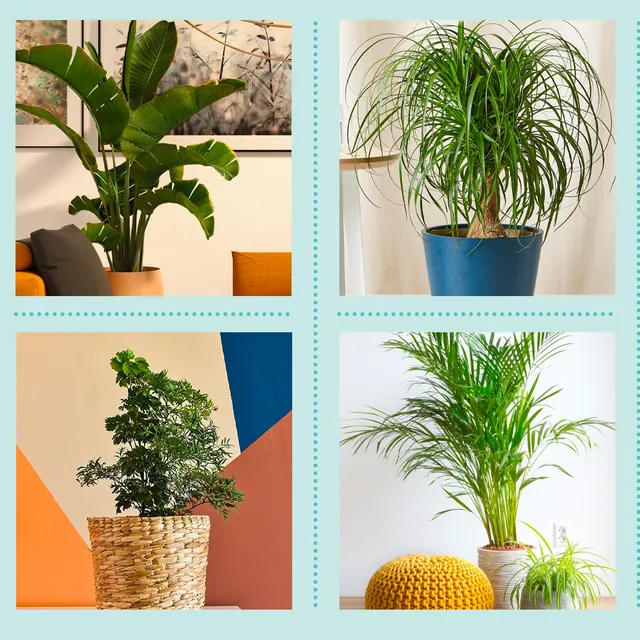The Best Indoor Plant Options to Beautify Your Home
Whether you’re looking to bring a little nature indoors or want to freshen up your living space, indoor plants are a great way to do so. But with so many plant varieties to choose from, it can feel overwhelming to know which ones are truly suitable for life inside. In this article, I’ll provide an overview of some of the top indoor plant picks along with care tips to help green up your home successfully.
Low Light & Low Maintenance Plants
If you have limited natural light at home or don’t want a high-effort commitment, these plants are great low-light tolerant options:
- Snake plant (Sansevieria trifasciata) – Nicknamed “Mother-in-law’s tongue,” this plant is incredibly tough and can thrive with very little light. It’s basically impossible to overwater. Snake plants release oxygen and remove toxins from the air.
- Pothos (Epipremnum aureum) – With heart-shaped leaves and trailing vines, pothos is one of the lowest maintenance indoor plants you can find. It does well in low-medium light and the soil only needs water when dry.
- ZZ plant (Zamioculcas zamiifolia) – As the name suggests, this plant is very easy to take care of. It tolerates low light and can go several weeks between waterings. The waxy green leaves add a nice accent to any room.
The above plants are basically foolproof for indoor gardening novices. They don’t demand much TLC and can withstand neglect better than most. I’ve found these three to be lifesavers when I’ve been too busy to tend to my plant babies for a stretch.
Higher Light Houseplants
If you have a sunnier spot at home, the following selections enjoy brighter conditions:
- Peace lily (Spathiphyllum) – Known for its pure white blooms, peace lilies thrive in medium to bright indirect light. They’re very happy when their soil stays evenly moist. Their leaves will droop when thirsty, serving as a visual cue to water.
- English ivy (Hedera helix) – With its dark green leaves and cascading vines, English ivy loves sunlight on its leaves. It’s perfect for hanging baskets or trailing along a bookshelf. Keep the soil lightly moist.
- Rubber plant (Ficus elastica) – These sculptural plants have thick, waxy leaves ideal for Medium to high light locations. Water only when the top inch of soil dries out. Rubber plants are dramatic statement pieces great for brightening up office spaces or living rooms.
The above high-light houseplants will reward you with quick growth and lush foliage if given the right conditions. I find that having a variety of light-loving greenery adds visual interest to my home’s décor and brightens my mood on gloomy days.

Clean Air Plants
If improving your indoor air quality is one of your goals, consider these natural air purifiers:
- English ivy – As mentioned earlier, English ivy is excellent at removing formaldehyde, benzene and trichloroethylene from the air.
- Peace lily – Aside from being lovely room decor, peace lilies are superstars at absorbing toxins like xylene and toluene.
- Bamboo palm (Chamaedorea seifrizii) – With their graceful trunks and wispy fronds, bamboo palms effectively reduce airborne mold spores, bacteria and viruses.
- Spider plant (Chlorophytum comosum) – Another trailing beauty, spider plants capture pollutants like carbon monoxide and acetone in their leaves. Their Spider plant (Chlorophytum comosum) – Another trailing beauty, spider plants capture pollutants like carbon monoxide and acetone in their leaves. Their cute Spider-ettes spreading offspring plants only adds to their charm!
I’ve noticed a marked improvement in the air quality of my home ever since incorporating these natural air purifiers into my indoor plant collection. So if cleaning up your environment interests you, these botanical beauties deserve a spot in your living space.
Plants for Bathrooms & Kitchens
Some plants are especially well-suited to thriving amid the humid conditions found in bathrooms or handling occasional splashes and dirtiness from cooking:
- Chinese evergreen (Aglaonema) – With their colorful foliage and tolerance of low light, Chinese evergreens love high-humidity environments like bathrooms.
- Peperomia – These petite tropical beauties come in an array of textures and hues. Their compact size fits well on bathroom counters or backsplashes.Most types enjoy humid air.
- Heartleaf philodendron (Philodendron hederaceum) – Known for its heart-shaped leaves, philodendrons thrive around baths and shower steam. Their vines grow well trailing along walls or over shower rods.
- Spider plant – As mentioned above, spider plants do superbly in bathrooms. Their hardiness and tolerance of low to medium light make them an ideal pick for kitchens too where occasional spills may occur.
Bathrooms and kitchens present unique indoor environments, so choosing plants that particularly match the conditions there leads to healthier, happier plant kids. I’ve found great results from incorporating some of the above selections into my own home’s “wet areas.”
Flowering Houseplants for a Splash of Bloom
Who doesn’t love a plant that blooms indoors? A few top picks for seasonal color include:

- African violet (Saintpaulia ionantha) – Prized for their dainty blossoms, African violets thrive readily in medium light with damp soil.
- Orchid – There’s a reason orchids are so popular—their exotic flowers dazzle endlessly. Phalaenopsis orchids bloom for months on end with standard care.
- Christmas cactus (Schlumbergera bridgesii) – Blooming in late fall through winter, this cactus adds cheer with its delicate, star-shaped blooms. It likes bright indirect light.
- Azalea (Rhododendron simsii) – When springtime arrives, treat your home to brilliant blooms with bloom-tastic azaleas. They enjoy shade and humidity.
What indoor gardener doesn’t love a plant that flowers consistently? Incorporating a few bloom buddies makes your home even more lively and delightful throughout the changing seasons. With some TLC, you can enjoy their charms indoors for months on end.
Caring for Your Houseplants
No matter which varieties you choose, here are some basic tips to keep all your indoor beauties at their best:
- Water when the top soil is dry to the touch, usually weekly for most plants.
- Move containers to varying light levels to mimic natural conditions—shade plants don’t want direct sun, for instance.
- Dust leaves regularly to remove dust buildup from indoor heating/cooling.
- Rotate plant positions monthly so all sides receive light evenly.
- Trim off dead or discolored sections as needed to promote new growth.
- Repot plants that become pot-bound in the spring, using fresh potting mix.
- Fertilize during the growing season every few months for greener growth.
- Address any pests promptly to maintain plant health.
-
What kinds of real plants can live indoors?
There are quite a few plant species that do well inside homes. Some common ones are peace lilies, pothos, spider plants, succulents, palms, and philodendrons. These plants need low light and don’t mind drier indoor air.
-
How much sunlight do indoor plants need?
Most indoor plants want at least a few hours of indirect sunlight every day. Direct sun rays through a window could potentially burn their leaves. Place plants in bright areas away from direct sun, like on shelving under skylights or near east or west facing windows that get morning or evening light. This seems to suit them pretty well.
-
What is the easiest houseplant to care for?
Perhaps the easiest plant would be something low maintenance like a pothos or snake plant. They don’t need a lot of water or light to survive. As long as you give them a drink when the soil gets dry, they should be fine. These kinds of plants are nearly impossible to sort of kill!

-
How often should indoor plants be watered?
Most houseplants need water about once a week, but it depends on the type of plant and indoor conditions. Check the soil before watering – if the top inch is dry, it’s time to water. You can water less in winter when plants are growing slower. It’s best not to have a set schedule and instead watch for signs of dry soil.
-
Is it hard to care for lots of houseplants?
Caring for several plants might seem like a lot of work, but it’s really not too bad. You just have to be organized – make a list of each plant’s needs, watering schedule, and location. That way you won’t forget anyone! It’s also important to keep up with regular maintenance like cleaning leaves and checking for pests. With good care, your green friends will bring you joy for years to come.
-
How can you make indoor plants healthier?
In addition to watering properly, giving plants fertilizer during the growing season helps them stay vibrant and healthy. You can use a liquid houseplant food or granular fertilizer in the soil. Pruning off any dead or diseased parts also promotes new growth. Speaking of growth – you may need to repot plants that seem kind of pot bound into larger containers with fresh potting mix from time to time.
-
What should I do if an indoor plant gets a pest?
If you spot bugs like spider mites or scale, isolate the infected plant quickly before the pests spread. Check all other plants nearby as well. Spraying the leaves and soil with a diluted natural insecticide or washing bugs off with water may help get rid of a minor infestation. As a last resort, you may have to dispose of a heavily bug-ridden plant before your whole collection is devastated! Prevention is best – regularly inspect leaves and stems.
-
Why are indoor plants good to have?
Other than making a home more beautiful, plants are very helpful. They produce oxygen and remove toxins from the air through photosynthesis. Studies show that plants have stress-reducing benefits and can boost mood. Houseplants also add humidity to dry indoor spaces in winter. Not to mention, caring for green friends is a relaxing and very rewarding hobby. So in many ways, houseplants seem truly amazing!

Top Houseplants for Indoor Use
| Plant | Light Needs | Water Needs | Special Care |
|---|---|---|---|
| Pothos | Low | Let soil dry between waterings | Trim vines as desired |
| Snake plant | Low | Let soil dry completely | Tolerates lack of water |
| Peace lily | Medium | Let soil become slightly dry | Likes high humidity |
| Chinese evergreen | Medium | Let soil partially dry | Prefers humid conditions |
| ZZ plant | Low | Let soil dry completely | Thrives on neglect |
